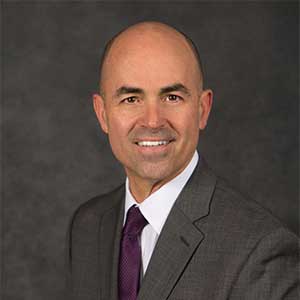We are living in turbulent times. At this point, the pandemic and supply chain shortages have become old news even though they refuse to go away. The good news? COVID-19 is declining across the U.S., and manufacturers are doing what they can to produce more vehicles. They are currently using many different strategies to make vehicles, such as having manufacturing plants run night shifts, altering designs to eliminate chip usage, and shipping partially completed vehicles that can be retrofitted later. The entire country is rethinking supply chains, and I have confidence that our supply problems will eventually be solved. Along the same lines, the pandemic may never go away, but medical professionals are doing their best to understand it, prevent it, and (when people are diagnosed) treat it.
But the pandemic and the supply chain aren’t the only challenges. The dealership model is still being challenged by manufacturers who want to go around dealers and use a direct sales model instead. Cellphone companies have been using over-the-air data transmission for a while now, and the technology has expanded to applications such as updating autonomous vehicles. These are changes with far-reaching consequences.
We know the dealer model works. It took decades to develop, and now that it is here, it would be foolish to throw it away. Customers benefit from our ability as dealers to look at their needs and help them with any problems they may have with their vehicles. Now is the time to communicate and help customers understand the value dealers add every day.
Another significant business change that seems to have kicked into high gear is EV production and sales. Although the EV market is growing faster in China than in the U.S., the market here is certainly increasing. In 2010, 1,191 EVs were sold in the U.S. By Dec. 31, 2020, the number for that year was 231,088. That’s still a small number compared to the number of vehicles currently on U.S. roads, but EV sales have picked up momentum. Adoption is probably going to be uneven — California will switch over much faster than Montana, for example — but manufacturers are shifting their focus away from combustion engines. On a national level, there will be a great deal of money for building charging stations so that drivers can take road trips and have plentiful choices about where to charge their vehicles if they are away from the outlet or charging station they have at home.
A final challenge is rising interest rates. In March 2022, inflation triggered the first interest rate increase in three years. Some economists predicted 25 basis points, and that’s what happened, but it won’t be the last increase and might not be the smallest one. There will be six more meetings this year, and the expectation is that the rate will reach 1.9% by the end of 2022. New and used car prices are already high; higher interest rates will make vehicles even more expensive, making it harder for your customers to afford the vehicles they need.
Life isn’t likely to get less complicated anytime soon. Still, a time-honored secret to getting through hard times is facing challenges as a group.
MTADA is your ally, and we work hard for you. We advocate for dealerships on a state level, and we help you with benefits, legal advice and a big-picture view of the industry, nationally and locally.
It is my privilege to represent and help you, and it will be exciting to see how everything turns out. But if association members stick together and pool our resources, I am certain we can continue to prosper no matter what problems are headed our way.
Bruce Knudsen
Executive Vice President Government Relations
bknudsen@mtada.com
406.461.7680








